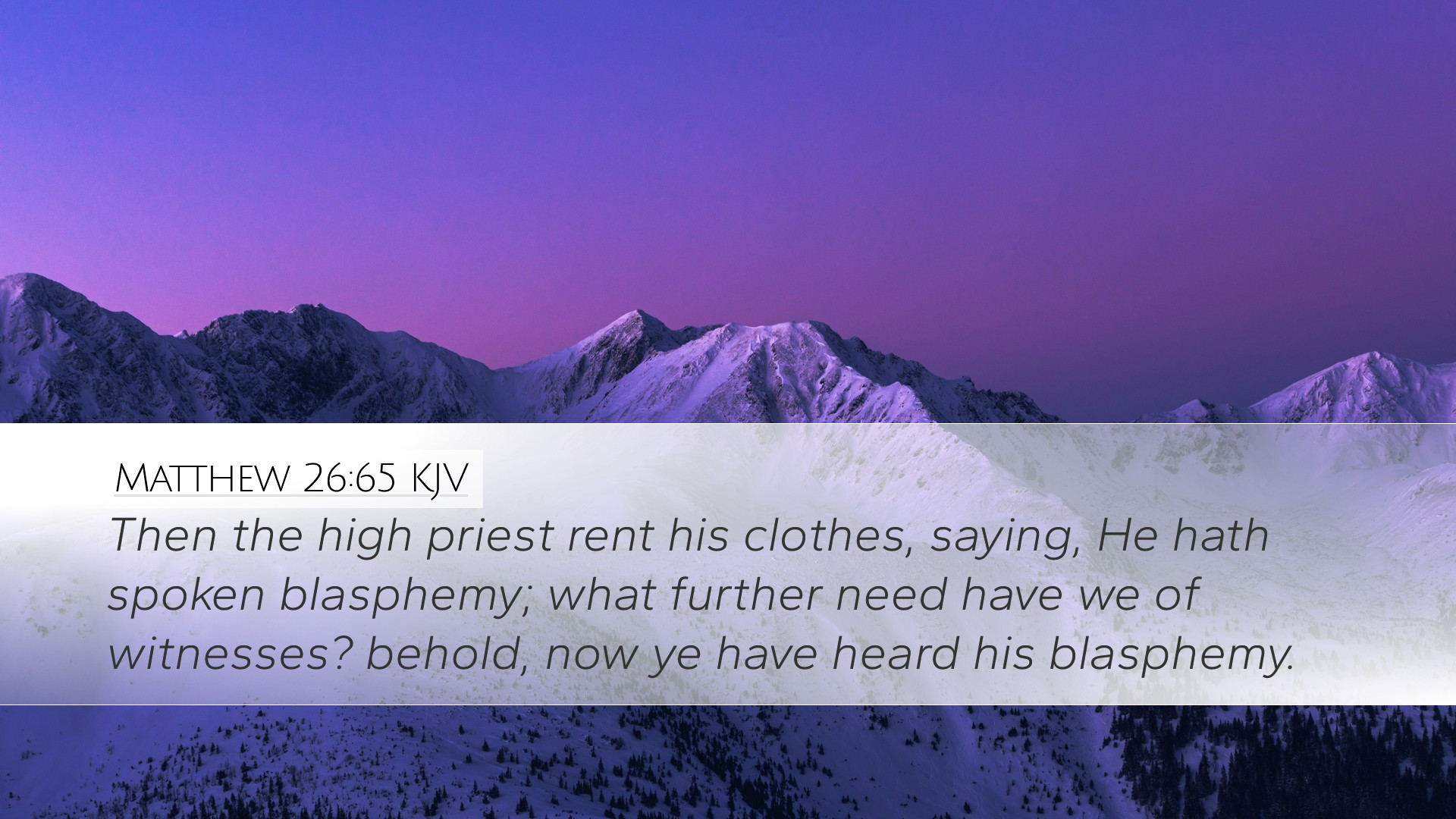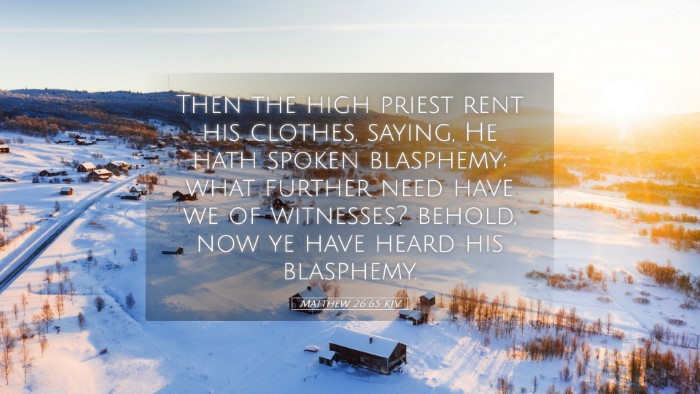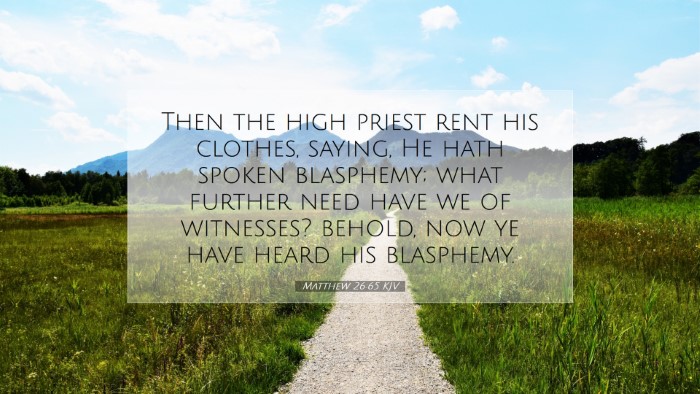Commentary on Matthew 26:65
Matthew 26:65 reads: "Then the high priest tore his robes, saying, 'He has spoken blasphemy! Why do we still need witnesses? You have now heard his blasphemy.'" This verse is a critical moment in the trial of Jesus, marking the climax of the accusations against Him. Below, we explore insights from notable public domain commentaries.
Context and Background
This incident takes place during an intense and pivotal moment as Jesus stands trial before the Sanhedrin. The high priest, traditionally seen as the religious and spiritual leader, plays a crucial role in condemning Jesus. Understanding the cultural and religious background is essential for comprehending the severity of the accusations made.
Insights from Matthew Henry
Matthew Henry emphasizes the significance of the high priest's actions. He notes that the tearing of the robes by the high priest was an ancient sign of grief and a signal of outrage. Henry argues that the high priest's response showcases a misguided zeal for God's honor, which ultimately leads him to commit a serious injustice against the innocent.
- Blasphemy Defined: Henry discusses the nature of blasphemy, suggesting that it includes not just dishonoring God verbally but also misrepresenting God's will through wrongful conduct. When Jesus claims equality with God, the high priest perceives this as a direct affront to divine authority.
- False Witnesses: In the preceding verses, the trial was permeated with contradictions from the witnesses presented. Henry notes that despite the lack of credible testimony, the high priest seeks to expedite the judgment against Jesus, highlighting the corrupt system of the day.
Insights from Albert Barnes
Albert Barnes brings a nuanced understanding to the high priest's accusation. He points out that the rationale behind the tearing of the robes is indicative of a dramatic reaction that escalates the narrative tension. Barnes elaborates on the theological implications of this scene, noting:
- Legal and Religious Implications: Barnes highlights that the act of tearing the robes not only signifies outrage but also acts as a moment of transition in the trial from impartial justice to emotional bias. The high priest's motivations stem from a deeply ingrained concern for religious orthodoxy.
- Fulfillment of Prophecy: He also draws attention to how this act fulfills the messianic prophecies about rejection and suffering, thus showcasing that Jesus's path is in accordance with divine foreknowledge.
Insights from Adam Clarke
Adam Clarke provides thorough exegesis on the linguistic and cultural aspects of the text. His observations include:
- Cultural Significance of the Tearing of Garments: Clarke explains that the tearing of a garment was an extreme measure in Jewish culture, prematurely marking one's rejection and indignation. It signifies the high priest's role as not only a religious figure but also a leader tasked with maintaining societal values.
- Accusation of Blasphemy: Clarke assesses the gravity of blasphemy within Jewish law, underscoring that such an accusation was punishable by death. Here, the high priest's declaration serves as the pivotal moment that seals Jesus’s fate even amidst the lack of substantive proof.
Theological Reflections
The event reflected in Matthew 26:65 goes beyond the immediate narrative, encouraging deeper theological reflections:
- Intersection of Justice and Injustice: The trial highlights the juxtaposition of earthly justice against divine justice. Jesus, the innocent Lamb, faces an unjust trial orchestrated by His own people.
- Understanding Blasphemy: It challenges readers to consider what true blasphemy is. The high priest labels Jesus’s claims as blasphemy, yet it is he who misrepresents God's will by condemning the sinless Son of God.
- Leadership Accountability: The actions of the high priest urge us to consider the responsibility of spiritual leaders in upholding truth and righteousness and not succumbing to emotional responses or biases.
Conclusion
Matthew 26:65 encapsulates a climactic moment of tension and reveals deep spiritual truths pertinent for today’s audience—pastors, students, theologians, and Bible scholars alike. By studying this verse alongside insights from respected commentaries, one can delve into the implications of Jesus's trial, enhance their understanding of the inherent struggles between human error and divine truth, and reflect on the broader narrative of redemption that unfolds throughout Scripture.


